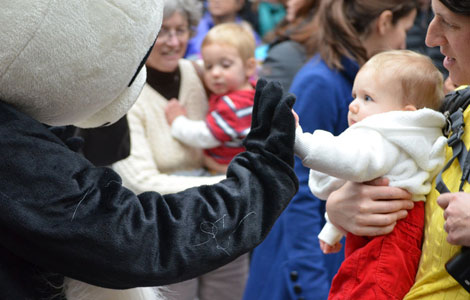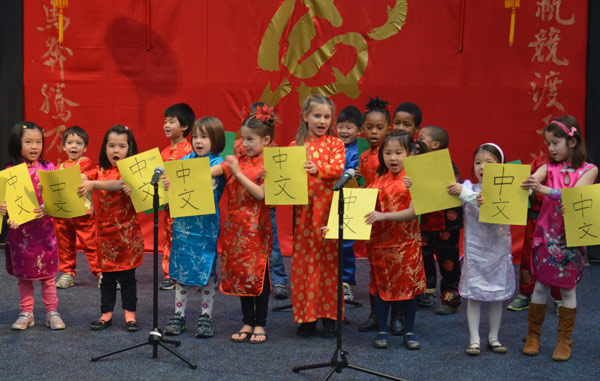Start it early, start it full
Updated: 2015-02-20 10:49
By Cai Chunying(China Daily USA)
|
||||||||
They are so popular that some US schools have used lotteries to determine who gets enrolled. "They" are Chinese immersion programs, which integrate teaching Chinese into everyday curriculum, CAI CHUNYING reports from Washington.
With Chinese Lunar New Year on Thursday, Aniya Carrington is busy perfecting singing a Chinese song that she will perform with her classmates at her school to celebrate the Year of the Ram.
The 6th-grader at Baltimore International Academy, a K-8 public charter school, recently also helped a Chinese woman who could not speak English at an emergency room to communicate with nurses and doctors during a visit to the place by Aniya with her family.
Aniya, who has been studying Chinese since kindergarten, is among more than 20,000 students in the United States enrolled in an increasingly popular program: Chinese immersion.
Similar to the immersion program of other languages such as French and Spanish, Chinese immersion programs use Chinese (mostly Mandarin) to teach subjects such as math, science and social studies. Through the process, students not only learn their subjects but acquire the language at a relatively proficient level.
In 2000 there were only nine elementary and secondary public and private schools in the US offering Chinese immersion programs. The number of programs exploded after 2007, with an annual average increase of 18. And now there are 187 elementary and secondary schools in 27 US states and the District of Columbia (DC) offering Chinese immersion programs, with most at K-5 level, according to the Mandarin Immersion Parents Council, a non-profit organization which tracks the number of such programs.
The programs have become so popular that many schools run a lottery for enrollment.
For example, Washington's Yu Ying Public Charter School, the only Chinese immersion school in DC, which US First Lady Michelle Obama visited and was impressed before her trip to China last May, had more than 1,000 applicants for about 20 open slots for the academic year 2014-2015.
Language immersion is not foreign to human learning. All children grow up learning their native language through immersing in the spoken environment provided by their parents and communities. Research shows that immersion is one of the most effective ways to learn a language.
Eli Strauss-Reis, now a 9th-grader, started Mandarin immersion in kindergarten at Potomac Elementary School, the first public school in the US to offer such a program in 1996, all the way through 5th grade. He has kept studying the language in middle and high school.
"It really is a great way to learn Chinese. In complete immersion, you stop thinking in English and start thinking in Chinese," he told China Daily in an interview that started in Chinese with near-native fluency. "You are not only studying the language, you are using the language on a daily basis. It's a lot fun as well. You learn it naturally so you do not need to sit there writing it or memorizing it."

 Across America over the week (from Feb 13 to 19)
Across America over the week (from Feb 13 to 19)
 Chinese in the South remembered
Chinese in the South remembered
 Ringing in Chinese New Year on the Nasdaq
Ringing in Chinese New Year on the Nasdaq
 Spring Festival greetings from the ambassadors
Spring Festival greetings from the ambassadors
 Las Vegas lights up for Lunar New Year
Las Vegas lights up for Lunar New Year
 Spring Festival fireworks in New York City
Spring Festival fireworks in New York City
 Going abroad for Lunar New Year
Going abroad for Lunar New Year
 New York Fashion Week
New York Fashion Week
Most Viewed
Editor's Picks

|

|

|

|

|

|
Today's Top News
Chinese students, faculty to study at Missouri university
Andover to deepen China ties
Chinese in the South remembered
California port chief upbeat on agreement to end dock strike
NBA China CEO sees the sport proliferate
China tilts to Kabul with US pullout
No letup seen for business travel
Chinese visitors set to celebrate New Year worldwide
US Weekly

|

|








